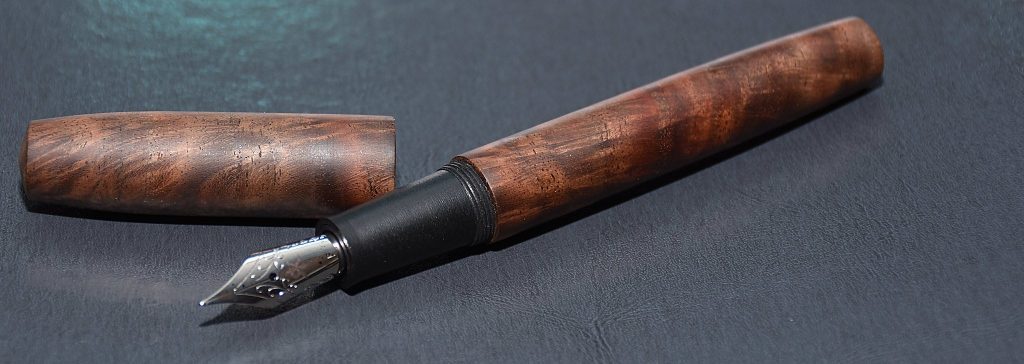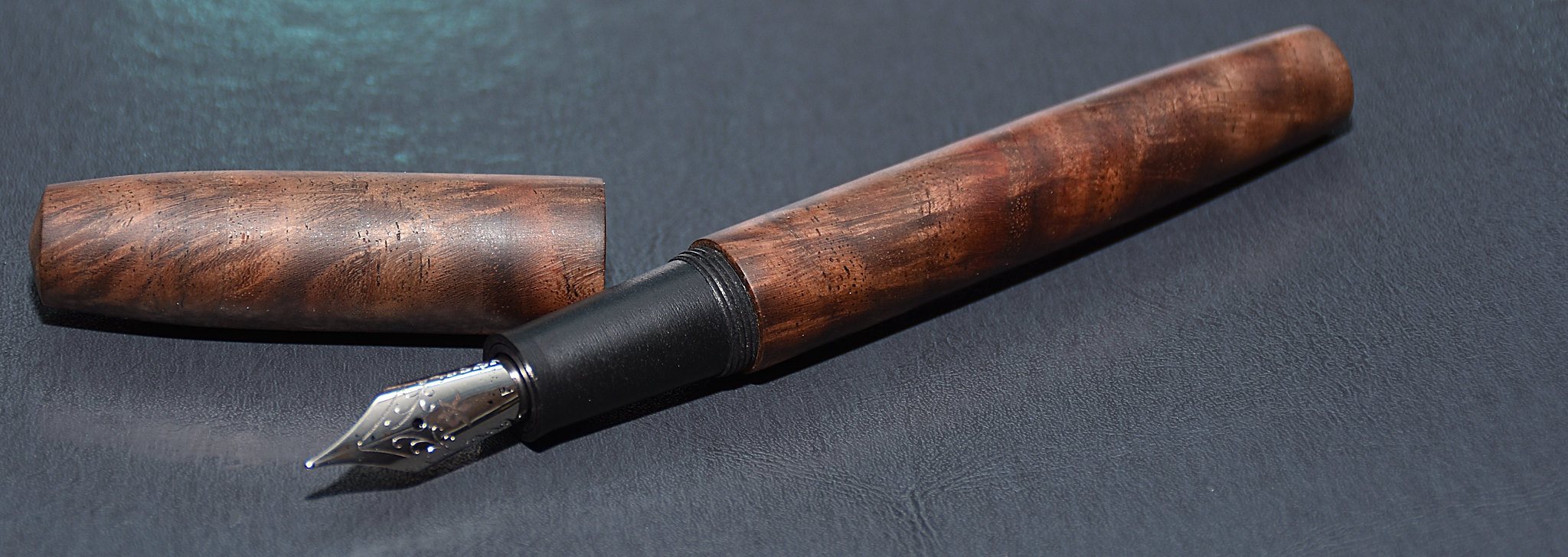Cocobolo is one of the more beautiful woods there is. Native to Central America, the wood of the cocobolo tree is one of the most variegated, with colors ranging from yellows, through oranges and reds to a wide range of browns. Streaks of black and purple can even appear in it. The sapwood tends to be pale yellow, with the other colors mostly appearing in heartwood. These colors are somewhat lighter in freshly sawn lumber, but the wood darkens up as it ages.
The Cocobolo tree is endangered today, with some countries outright banning its logging and export. The primary sources for cocobolo wood today are Mexico and Nicaragua, both of which still permit the logging and export of the wood. The tree is considered to be a true rosewood, although it is denser and oilier than most other varieties of rosewood. Some people refer to it as “Mexican Rosewood.” There is a high probability that it will become even more scarce in the future. Trees only grow to about 60 feet tall, with a 1.5 to 2 foot trunk diameter. This adds to the rarity of the wood, as not a lot of wood can be harvested from a single tree. It also makes wide boards basically impossible to find and drives up the cost of wider ones. Cocobolo guitar backs, which are usually made of two bookmatched pieces, are extremely expensive.
As a wood, cocobolo provides several challenges to the woodworker. The wood is extremely hard, close to ebony; but the grain, while fine, is interlocked and can be extremely wavy. It tends to dull tools quickly and dull tools will cause a considerable amount of tearout in the wood. In addition, the wood is oily enough that it doesn’t accept adhesives well. Normal PVA glue does not work well with cocobolo, as it cannot get a “bite” on the wood. Epoxy is the recommended glue for use with this wood. When finishing cocobolo, especially when applying the first seal coats of varnish, care must be taken to prevent “bleed.” This happens when the oil from the cocobolo is carried over onto adjacent wood pieces in the varnish, staining that wood.
Cocobolo is a very aromatic wood, with a strong floral odor. However, in addition to the difficulty of working with the wood, it is one of the woods that causes the most allergic reactions in woodworkers. These reactions can range anywhere from skin irritations to respiratory problems. Pink eye and asthma-like symptoms are fairly common. Wearing a dust mask to protect from wood dust is highly recommended when working with cocobolo.
The combination of the wood’s natural oils, its odor and its hardness make it very resistant to rot and insects. Items made of cocobolo are very durable, able to withstand the wet/dry cycle that all wood items are subject to.

Nevertheless, cocobolo is one of the more popular hardwoods, due to its innate beauty. It is mostly used for smaller items, due to its rarity and cost. Musical instruments, small turnings, gun grips and knife handles are all common items to find made from cocobolo. However, some larger furniture pieces are also made, albeit with high prices.
Overall, cocobolo is a rather expensive wood, running in the $50 to $65 per board foot range, making it comparable to Brazilian Ebony for price. But large pieces, such as guitar backs, can run several hundred dollars. It has excellent acoustic properties, making it a favorite for musical instruments, especially guitars. Smaller pieces, such as turning blanks, pen blanks and knife scales are less expensive, but still much more costly than domestic hardwoods.
While hardwood boards are available for this wood, from hardwood suppliers, the selection is limited and the cost is high. Expect to pay over $60 per board foot for boards. Cocobolo veneer is available, although like boards, the price is high. For example, one online supplier lists cocobolo veneer at roughly $15 per square foot, in sheets, while walnut veneer of the same grade lists at about $3 per square foot. There are apparently no mills producing cocobolo plywood at this time; but with the veneer available, it would be possible to convert any plywood product with a smooth surface into cocobolo plywood for a project.




